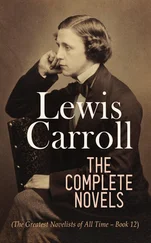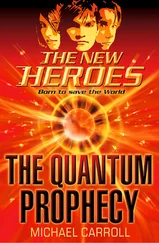A University of Washington study demonstrated that elementary school students who wrote essays by hand were far more likely to write in fully formed sentences and learn how to read faster. Much of this is due to how handwriting accelerates and deepens our ability to form—and therefore recognize—characters. 17
The complex tactile movement of writing by hand stimulates our mind more effectively than typing. It activates multiple regions of the brain simultaneously, thereby imprinting what we learn on a deeper level. As a result, we retain information longer than we would by tapping it into an app. 18 In one study, college students who were asked to take lecture notes by hand tested better on average than those who had typed out their notes. They were also able to better retain this information long after the exam. 19
When we put pen to paper, we’re not just turning on the lights; we’re also turning up the heat. Writing by hand helps us think and feel simultaneously.
These studies and many like them indicate that the benefits of writing by hand stem from the very complaint consistently leveraged against it: inefficiency. That’s right: The fact that it takes longer to write things out by hand gives handwriting its cognitive edge.
It’s pretty much impossible to hand-transcribe lectures or meeting conversations verbatim. When we write by hand, we’re forced to be more economical and strategic with our use of language, crafting notes in our own words. To do that, we have to listen more closely, think about the information, and essentially distill others’ words and thoughts through our own neurological filtration system and onto the page. Typing notes, in contrast, can quickly become rote: a frictionless highway where information freely passes in one ear and right out the other.
Why is it so important to craft notes in your own words? The science suggests that writing by hand enhances the way we engage with information, strengthening our associative thinking. It allows us to form new connections that can yield unconventional solutions and insights. We’re simultaneously expanding our awareness and deepening our understanding.
How we synthesize our experiences shapes the way we perceive and interact with the world. This is why journaling has proven to be a powerful therapeutic tool in treating people who suffer from trauma or mental illness. Expressive writing, for example, helps us process painful experiences by externalizing them through long-form journaling. Cognitive behavioral therapy (CBT) uses scripts to treat people obsessing over intrusive thoughts. A distressing thought is detailed in a short paragraph. This script is then written over and over again until the thought begins to lose its death grip on the person’s mind, granting some much-needed perspective and distance—something we all struggle to find when dealing with challenging situations.
Toward our latter days, writing can help preserve our most cherished memories. Studies suggest that the act of writing keeps our minds sharper for longer. I’ve received many emails over the years praising Bullet Journal for helping those with poor memories stay organized, regardless of age. For instance, Bridget Bradley, a fifty-one-year-old Bullet Journalist, now remembers “what the weather was like three months ago, how many times I went to the gym last month, that I have made a reservation (by email) for that restaurant table, that I am going on holiday in July, and that I have already worked out what I need to take with me (six months in advance!) so that I have time to buy and prepare for it.” Similarly, I’ve heard from numerous people who found that Bullet Journaling helped their memory improve after being compromised by trauma or medical procedures.
A dear friend of mine once told me, “The long way is the short way.” In a cut-and-paste world that celebrates speed, we often mistake convenience for efficiency. When we take shortcuts, we forfeit opportunities to slow down and think. Writing by hand, as nostalgic and antiquated as it may seem, allows us to reclaim that opportunity. As we craft our letters, we automatically start filtering the signal from the noise. True efficiency is not about speed; it’s about spending more time with what truly matters. In the end, that’s what the Bullet Journal method is all about.
Your Bullet Journal can be your to-do list, journal, planner, sketchbook, or all of the above, all in one place. This flexibility stems from its modular structure. An easy way to conceptualize the system is to imagine the pieces of a Lego set. Each piece of the Bullet Journal’s system serves a specific function, be it ordering your day, planning your month, or tackling a goal. You’re free to mix and match the pieces to customize the system to meet your needs. As those needs inevitably change over time, this flexibility allows the system to adapt and remain relevant through the different seasons of your life. As you evolve, so will the function and structure of your Bullet Journal.
In this part of the book, we’ll examine the core building blocks that lay the foundation of the system. You’ll learn how they work, why they work, and how they snap into the larger framework. If you’re following along in sequence, here’s where you’ll learn how to set up your own Bullet Journal and migrate the content from your Mental Inventory.
If you’re an old hand at this, Part II aims to take your BuJoJitsu to the next level. We’ll delve into the tools and techniques you’ve been using and explore the reasoning behind their design. This section functions both as a reference and a guide to help answer any questions that may have bubbled up during your time Bullet Journaling.
If you’re new to the Bullet Journal, I suggest reading through all the chapters in this part before setting pen to paper. Each method and technique is effective on its own, but the true power of the Bullet Journal is found in the sum of its parts. To get the most out of your BuJo experience, it’s important to understand how these parts interact and influence each other. This part will walk you through each step, how it works, and how to set up your own Bullet Journal step by step.

Most of the organizational methods people tried to shove down my throat didn’t make sense, felt impractical, and left me feeling frustrated and/or demoralized. Those are the last things I want you to feel!
I’ve done my best to avoid making this part read like stereo instructions, but it’s unavoidably technical. At first glance, it may look like there are a lot of moving parts. As you read through the following chapters, I invite you to consider each component individually. Hold it up to the light; examine it. Ask yourself: Would this help me?
If at some point you feel overwhelmed, take a step back and start by implementing only the pieces that make sense. Most components are self-contained by design, so you can effectively use them even if you don’t use the rest. Start with what speaks to you—even if it’s just one piece—and build from there. This is also the way the Bullet Journal was born: one workable piece at a time.
KEY CONCEPTS
INDEX
Used to locate your content in your Bullet Journal using Topics and page numbers.
FUTURE LOG
Used to store Future Tasks and Events that fall outside the current month.

Читать дальше




![Райдер Кэрролл - Bullet Journal метод [litres]](/books/407399/rajder-kerroll-bullet-journal-metod-litres-thumb.webp)









